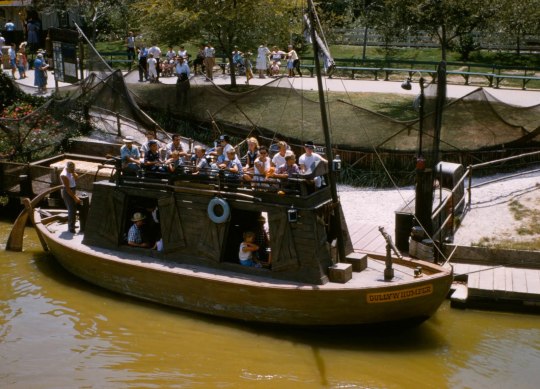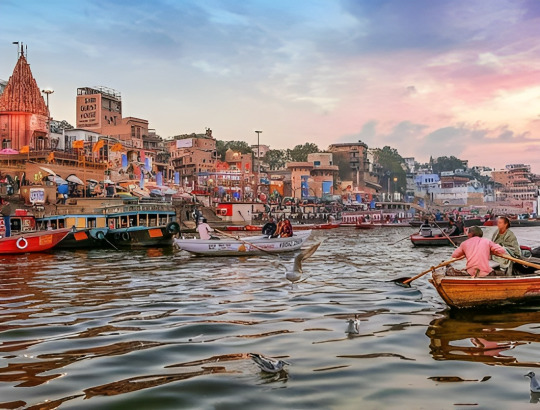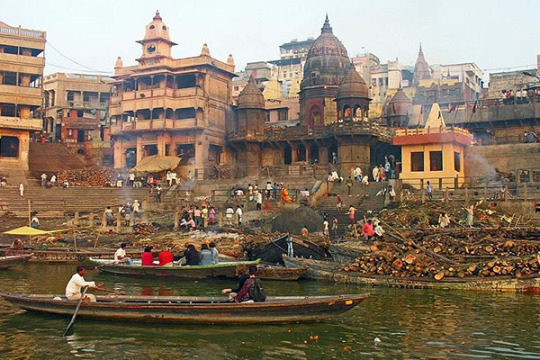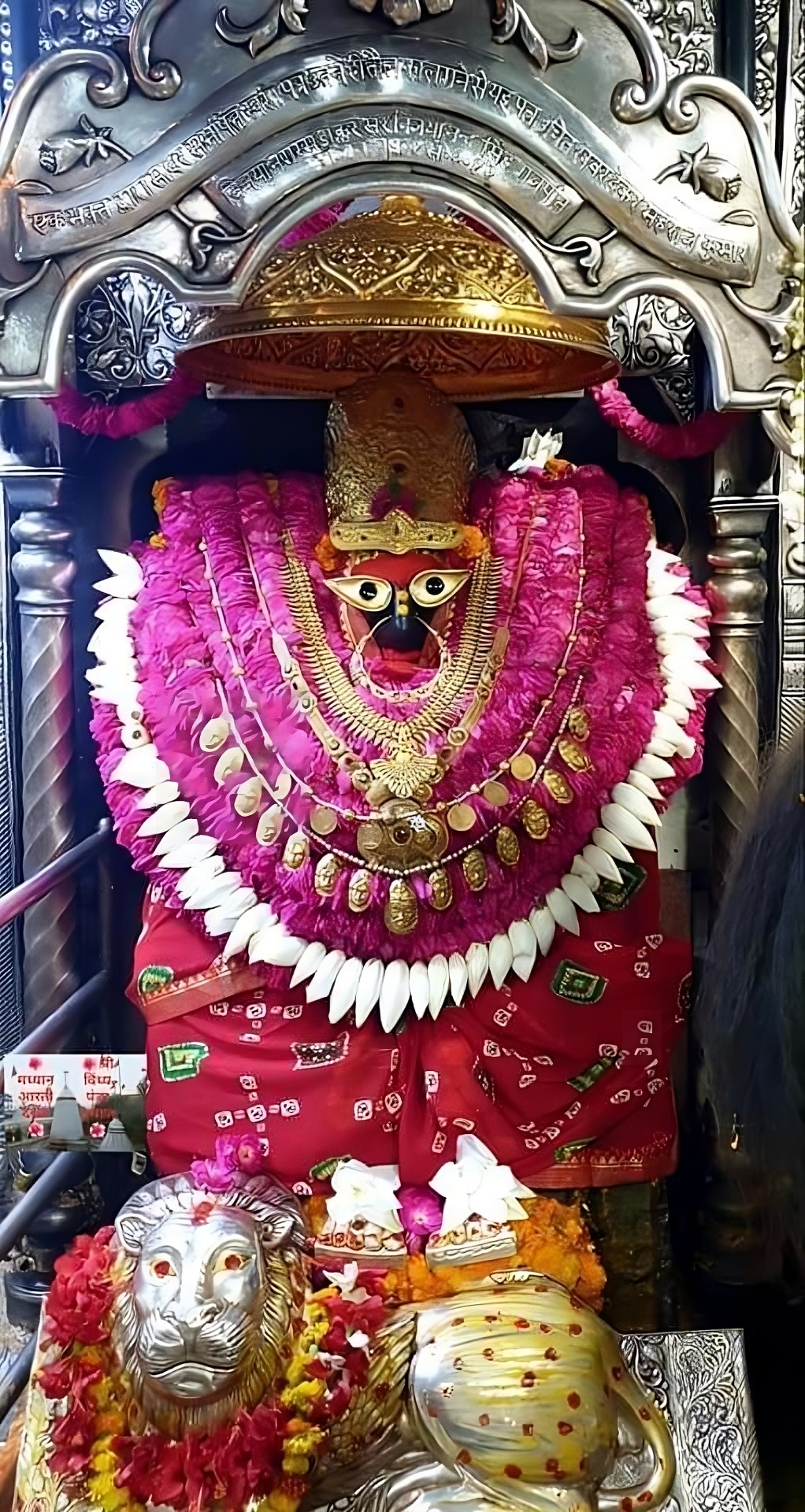#mark twain river boat
Text
The Mark Twain River Boat A Disneyland Original | Full Ride POV | 2022
The Mark Twain River Boat A Disneyland Original | Full Ride POV | 2022

View On WordPress
#Disney#Disney Parks#Disneyland#disneyland 2022#disneyland california#Disneyland History#disneyland mark twain#Disneyland Park#Disneyland Resort#disneyland rides#disneyland rivers of america#disneyland vlog#mark twain#mark twain boat#mark twain disneyland#mark twain river boat#mark twain riverboat#mark twain riverboat disneyland#opening day ride at disneyland#riverboat#Rivers of America#rivers of america disneyland#tom sawyer#Walt Disney#Walt Disney World
0 notes
Video
undefined
tumblr
Silent 8mm home move, August 1966
#vintage disneyland#disneyland#disneyland california#main street usa#sleeping beauty castle#house of the future#matterhorn#storybook land canal boats#chicken of the sea pirate ship#jungle cruise#rivers of america#mark twain riverboat#dlrr#disneyland railroad#indian village#monorail#submarine lagoon#skyway#it's a small world#iasw#e: 60s#video#*mp
126 notes
·
View notes
Text

Disneyland's keel boat Gullywhumper, 1964.
The Gullywhumper faithfully plied the Rivers of America around Tom Sawyer's Island for 42 years until one evening in May 1997, when the boat began to rock side to side. It capsized, dumping a full boatload of passengers into the river, leaving several with minor injuries. The boat was removed for inspection and neither it nor its companion craft the Bertha Mae returned for operation.
Instead, the Gullywhumper returned to Rivers of America as a prop and was moored on Tom Sawyer Island where passengers on the Davy Crockett Canoes, the Sailing Ship Columbia, and the Mark Twain Riverboat could see it while passing. Eventually, hull damage caused the boat to flood and sink, and it was finally removed from Disneyland in April 2009.
#vintage#Mike Fink's Keel Boats#1960s#amusement park#attraction#passengers#60s fashions#Frontierland#New Orleans Square#Bear Country#Disney
44 notes
·
View notes
Text
Episode 110: Ghost Writers in A.I. (featuring Michael Swaim)

On this week's episode, Cody and Garth are joined once again by Michael Swaim of Small Beans! Together they discuss the time a famous author wrote a book posthumously. That's right! It's actual ghost writers! They also discuss Michael's new book, The Climb and delve into the philosophical ramifications of generative A.I. on the world of artists and creators. So grab your Ouija™ boards, fire up the chatbots, and crack a few glo-sticks, it's about to get weird.

Thanks for joining the boys again, Michael! Please check out Michael Swaim's new memoir, The Climb, and the comic Michael and Garth made, One Last Job!
Check out the images below discussed in this week's episode and please come join the episode discussion on the Least Haunted Discord!
Samuel Langhorne Clemens a.k.a Mark Twain (1835-1910)

A steam powered River Boat, much like Mark Twain piloted in the 1850's.

Young Sam Clemens as a young typesetter's apprentice

Original 1901 Oujia™ Board

Pearl Lenore Curran, the medium who communicated through Ouija™ board with the "spirit" of Patience Worth- a girl who supposedly lived in the 1600's - to write a series of novels and collections of poetry.

Emily Grant Hutchings, (1870-1960), friend of Pearl Lenore Curran, and St. Louis journalist. She was present at the Patience Worth Ouija™ sessions. In 1916 she, her husband, and medium Ms. Hays used a Ouija™ to communicate with the "spirit" of Mark Twain©.

The book, Jap Herron by Mark Twain, as communicated through the Oujia™ Board.
#leasthaunted#michael swaim#mark twain#podcast#funny#ghosts#ghost writing#paranormal#podcasts#skeptics#ouija#ouija board#small beans
7 notes
·
View notes
Text
Favorite Disney Parks Attraction Showdown: Round 1 - Group C1


Videos and propaganda under the cut!
Disney riverboats/Mark Twain Riverboat: Disneyland, WDW Magic Kingdom, Tokyo Disneyland, Disneyland Paris
Propaganda:
"It's a very pretty boat."
youtube
Na'vi River Journey: WDW Animal Kingdom
youtube
#disney parks attractions tournament#disney parks#disney world#disney#poll#disneyland#wdw#animal kingdom#avatar#mark twain#riverboat#round 1#C1#tournament poll
19 notes
·
View notes
Photo

Although he was acclaimed as a travel writer, Jonathan Raban, who has died aged 80, disliked the term. He agreed with his fellow writer Bruce Chatwin, who famously turned down the Thomas Cook award, that the term was too limiting. He said he found it an “open form”, which was perfect for him because “I write between genres anyway”. When asked why, unlike Chatwin, he accepted the Cook award twice, he said: “I was hungry for prizes.”
He was also hungry to travel, to get away from his roots. The leaving of Britain formed a crucial part of much of his writing, even as he sailed around the island in Coasting (1986). The heart of his work was set on water; his writing mirrors the movement of the sea, its calm with turmoil always lurking beneath, taking you along with it, hiding and revealing. He mixes literary sources and knowledge with the people and places encountered on his journey; he’s less exotic than Chatwin, less caustic than Paul Theroux, but all of it comes in service to his real journey, within himself, escaping into travel. “Wherever I was, I felt like an outsider,” he said, and it is a feeling that permeates his writing, though he was drawn to America, a land of immigrants: the freedom of adjusting to this new world, and its contrasts with his old, became a major theme.
What he was escaping was the English world into which he was born, in Hempton, Norfolk. He was three when he first met his father, the Rev Canon J Peter CP Raban, an army captain returning from the second world war. He grew up in various parish postings, and his father came to represent “the Conservative party, the army, the church, the public school system in person”. It was his mother, Monica (nee Sandison), who “taught me to read, which was my one proficiency”.
He despised boarding school, to which he was sent at five, and eventually studied English at Hull University, where he organised a library committee in order to meet Philip Larkin, notoriously adept at avoiding students. They discussed novels and jazz, but never poetry. He married a fellow student, Bridget Johnson, in 1964. After graduating he taught English and American literature at Aberystwyth, then at East Anglia; he was captivated by American writers, particularly Saul Bellow, Bernard Malamud and Philip Roth, and published a study of Mark Twain’s Huckleberry Finn.
In 1969, he moved to London as a freelance writer, on the recommendation of Malcolm Bradbury, falling into the last hurrah of the Grub Street era, reviewing while living in the basement of the house shared by the poet Robert Lowell and the writer Lady Caroline Blackwood, after his marriage ended. His experience of Larkin and Lowell led to another book of literary criticism, The Society of the Poem. He joined the circle that emerged around the New Review magazine, in Soho’s Pillars of Hercules pub, and in 1974 published Soft City, a mix of personal memoir and London observation that became an early example of “psychogeography”.
His first travel book, Arabia Through the Looking Glass (1979), took a modern orientalist view of the area reminiscent of Charles Doughty’s Travels in Arabia Deserta and other classic travel writing on the Middle East. Old Glory (1981) was his first book set in the US, taking a skiff down the Mississippi River from Minneapolis to New Orleans. It recalls his study of Huckleberry Finn, blending the approaching age of Ronald Reagan into his inward experiences with America’s own eccentricities, and was a success on both sides of the Atlantic. Jan Morris called it “the best book of travel ever written by an Englishman about the United States”.
His first novel, Foreign Land (1985), follows an eccentric expat Englishman, George Grey, who leaves the Caribbean to return home, much to the consternation of his daughter, and sail a just-bought boat around Britain. Raban recapitulated the story himself in Coasting, in which he sails around the country, which, as the Falklands war erupts, seems an increasingly insular island nation. The book marks the perfecting of his classic English voice, that of the friendly faux-bumbler whose self-deprecation is itself a form of humble-brag, which has served British humour from Arthur Marshall to Bill Bryson; it made him a neutral sort of observer to Americans he met.
After publishing a memoir, For Love & Money: A Writing Life, he moved to the US, his journey across the Atlantic in a container ship told in Hunting Mister Heartbreak: A Discovery of America (1990), and, crucially, a poignant leaving scene that reflects the end of his second marriage, to the London art dealer Caroline Cuthbert.
He settled in Seattle, where in 1992 he married his third wife, Jean Lenihan; their daughter, Julia, was born in 1993. He continued travelling – Bad Land: An American Romance was set in Montana, dealing with the difficult dreams of immigrants to the beautiful but harsh Big Sky country. But his next book was perhaps his finest. Passage to Juneau (1996) is nominally another boat trip, on Alaska’s Inside Passage, a man leaving his wife and daughter for his travel. But midway through the trip, he returns to England, where his father is dying and his family has gathered. It is a travelogue of the writer’s mid-life implosion; he returns to finish his journey only to be greeted by his wife announcing she and his daughter are leaving him.
He remained in Seattle to concentrate on the joint care of his daughter. His 2003 novel, Waxwings, takes its butterfly title from Nabokov’s Pale Fire: “I was the shadow of the waxwing slain / By the false azure of the window pane.” Drawing on Bad Land, it is the story of an expat Hungarian-British man, in the dot.com boomtown that is Seattle, with an American wife, and an illegal Chinese immigrant worker who begins reconstructing his house. Raban was a distant relative of Evelyn Waugh, and the book recalls Waugh’s Men at Arms, where the social whirl does not stop for the newly launched war. My Holy War (2006), about the 9/11 attack and the US invasion of Iraq, was almost a companion piece.
In 2006 he published his third novel, Surveillance, in which a journalist tracks down a reclusive writer who has been kept hidden by his publisher lest he destroy the credibility of his Holocaust memoir. Its prime concern is the many-faceted ambiguity of liberty in the war on terror. “The world changed,” he said. “It didn’t change with 9/11. It changed with the Patriot Act, with the homeland security measures and the war on terror.”
His 2010 collection, Driving Home, is an eccentric mix of literary criticism, tales of great sea voyages, the state of the US in the 21st century and the mix of people he meets along the way, even as he remained in Seattle. A 2011 essay in the New York Times, The Getaway Car, detailed a drive down the Pacific coast to take Julia, now 18, to university at Stanford, outside San Francisco. Later that year, Raban suffered a massive stroke, which left one side of his body paralysed and confined him to a wheelchair. He continued writing, primarily for the New York Review of Books. It seemed an ironic fate for a writer who saw his journeys as “a means of escape, freedom and solitude, I could be happy … in a way I couldn’t be at home”. Yet he had always travelled through literature, and through his writing. And now he had a different sort of freedom in his daughter, which perhaps allowed him to address his own escape in his last book, to be published this autumn, a memoir titled Father and Son.
Julia survives him.
🔔 Jonathan Raban, writer, born 14 June 1942; died 17 January 2023
Daily inspiration. Discover more photos at http://justforbooks.tumblr.com
20 notes
·
View notes
Text
Still on my disneyland rot-
Favorite Disney Parks Ride
Catherine: TRON Lightcycle Run
Lovette: Smugglers Run
Kiara: Big Thunder Mountain Railroad
Veil: Pirates of the Caribbean
Galatea: Space Mountain
Nasira: Jungle Cruise
Emery: It's a Small World
Lyss: Mad Tea Party
Ephraim: Incredicoaster
Lavi: Grizzly River Run
Lorelei: Finding Nemo Submarine Voyage
Idris: Dumbo the Flying Elephant
Loxias: Indiana Jones Adventure
Odette: King Artur Carrousel
Des: Astro Blasters
Amias: Matterhorn Bobsleds
Nereus: Astro Orbitor
Isidoros: Kilimanjaro Safari
Kyrie: Kali River Rapids
Briar: Beauty and the Beast
Erasmus: Dinosaur
Averett: Star Tours
Cordelia: Rock 'n' Roller Coaster
Naia: Jumpin' Jellyfish
Ezra: Mark Twain Riverboat
Yuuto: Rise of the Resistance
Pyxis: Storybook Land Canal Boats
Nova: Radiator Springs Racer
Lacie: Haunted Mansion
Leveret: Web Slingers
Aspen: Silly Symphony Swings
Kagero: Soarin' Around the World
Yua: Snow White's Enchanted Wish
Makaio: Splash Mountain
Doll: Tower of Terror
#twst oc#twisted wonderland oc#oc#twstoc#twst ocs#twst#oc headcanons#might draw some of the ocs in the uniforms or in the ride vehicle
3 notes
·
View notes
Text
The Top Must-See Attractions in Lucerne
Lucerne is located in the centre of Switzerland and offers the best history, culture and natural views. Although walking is a good and fun way to move from one place to another in the city, a limousine ride could offer you the ultimate experience.
Here are some must-see attractions in Lucerne that you can easily visit with a limousine hire chauffeur transfer:
1. Chapel Bridge/ Kapellbrücke
Particularly impressive, Chapel Bridge, built in the first half of the fourteenth century, is a covered wooden bridge which is a distinctive symbol of Lucerne. This one is across the Reuss River and has flowers and other paintings depicting history. Do not leave without a visit to the Water Tower located next to the bridge – it was a prison and treasury at different times. Get to the bridge in a Lucerne limousine transfer, and look at the historical appearance of the bridge.
2. Lion Monument/ Löwendenkmal
This touching monument was chiselled into the sandstone cliff-top and highlights the brutal slaying of Swiss Guards during the French Revolution in the year 1792. Mark Twain coined it “the saddest and most moving piece of rock in the world”; the monument elicits so much compassion, which is why it is remarkable for its historical and artistic purpose. Your limousine chauffeur can drive to the next park then you can walk to the monument in case you need some form of solitude to actually ponder over the meaning of the entire monument.

3. Old Town/ Altstadt
The Old Town of Lucerne is a Garret-style alley filled with small and colourful buildings, and pretty squares are everywhere. The place is attractive, providing various outlets such as shops, cafés, and architectural landmarks. Most buildings are medieval, and the atmosphere is lively; it is excellent for a stroll and finding exciting corners. Ride in a door-to-door limousine on the pleasant city streets while the car waits for you on foot if you want to tour a specific area on foot.
4. Lake Lucerne/ Vierwaldstättersee
This beautiful lake is located in the middle of mountain ranges. It has a beautiful view and so many things to do. Ride on a cruise around the lake for an excellent feeling of the surrounding city and environment. First, you can be driven to the lakeside in a limousine before you take a boat ride to have a perfect view of Lucerne.

5. Swiss Museum of Transport/ Verkehrshaus der Schweiz
This is a fantastic museum that exhibits the history, transportation, and communication of Switzerland. It is entertaining and, at the same time, a learning process for everyone, regardless of their age. The various types of vehicles, aircraft, and trains, the planetarium, and the IMAX theatre are some highlights worth visiting. Move comfortably to the museum, which will take you a couple of hours and give you an overview of the transport history of Switzerland.
6. Musegg Wall/ Museggmauer
This well-preserved city wall, built in the 14th century and has nine towers, is open to some of them—touring the towers for a better view of Lucerne and other nearby areas. Your Lucerne chauffeur transfer can bring you to the beginning of the wall, where the historical climb and the panoramic views can begin.
Originally Posted: https://limousinehire.ch/blogs/the-top-must-see-attractions-in-lucerne/
0 notes
Text
Varanasi Travel Guide 2024 – For Indians – Best Things to Do

Exploring Varanasi, the City of Light
Welcome to Varanasi, the spiritual heart of India and one of the oldest continuously inhabited cities in the world. Known as Kashi, or the City of Light, Varanasi is where spirituality and culture intertwine, creating a unique experience for every traveler. This Varanasi Travel Guide 2024 is tailored for Indian travelers, offering insights into the best things to do and see in this mesmerizing city. Whether you’re seeking spiritual enlightenment, cultural enrichment, or simply a unique adventure, Varanasi promises an unforgettable journey.

Mark Twain rightly said – “Benares is older than history, older than tradition, older even than legend, and looks twice as old as all of them put together.”
Best things to do in Varanasi
1. Visit the ghats

Varanasi is renowned for its ghats – the series of steps leading down to the Ganges River. Each ghat has its own significance and charm. Dashashwamedh Ghat, one of the oldest and most important, is a bustling hive of activity. Here, you can witness pilgrims performing rituals, sadhus meditating, and locals engaging in daily life. Manikarnika Ghat, the main cremation ghat, offers a profound glimpse into the Hindu belief in life and death. Don’t miss Assi Ghat, a quieter spot perfect for morning yoga and meditation sessions.
2. Take a boat on the Ganges at dawn and witness Ganga Aarti at Dusk

One of the most iconic experiences in Varanasi is taking a boat ride on the Ganges River at dawn. As the sun rises, the ghats come alive with the sound of temple bells, chants, and the sight of devotees taking a holy dip. In the evening, the Ganga Aarti at Dashashwamedh Ghat is a must-see. The elaborate ceremony, with its synchronized rituals and blazing lamps, creates a magical ambiance that leaves a lasting impression.
3. Explore the Old City

The narrow, winding lanes of Varanasi’s Old City are a treasure trove of history and culture. Here, you can discover ancient temples, vibrant markets, and hidden gems around every corner. Don’t miss the Kashi Vishwanath Temple, one of the most revered Hindu temples dedicated to Lord Shiva. The bustling bazaars are perfect for picking up souvenirs, such as silk sarees, brassware, and religious artifacts.
4. Head to Durga Temple

Also known as the Monkey Temple due to the resident monkeys, the Durga Temple is an important site dedicated to the goddess Durga. The temple’s striking red color and serene atmosphere make it a popular destination for both devotees and tourists. The temple is especially lively during Navratri when it is adorned with lights and flowers, and special prayers and rituals are performed.
5. Wander around the Tulsi Manas Temple

The Tulsi Manas Temple is a modern temple built in honor of the poet-saint Tulsidas, who wrote the Ramcharitmanas. The walls of the temple are adorned with verses and scenes from the epic, making it a fascinating place to explore. The temple’s peaceful garden is an ideal spot to relax and reflect on the rich literary heritage of India.
6. See some art at Bharat Kala Bhawan Museum
For art and history enthusiasts, the Bharat Kala Bhawan Museum is a must-visit. Located within the Banaras Hindu University campus, the museum houses an impressive collection of artifacts, including sculptures, paintings, textiles, and ancient manuscripts. The museum offers a deep dive into the cultural and artistic history of Varanasi and the broader region.
7. Go over the river to Ramnagar Fort

Across the Ganges River lies the Ramnagar Fort, a 17th-century fort and palace complex that serves as the residence of the Maharaja of Varanasi. The fort’s museum showcases vintage cars, medieval costumes, and an eclectic array of artifacts that provide insight into the royal history of Varanasi. The fort also offers stunning views of the river and the city, especially at sunset.
8. Visit one of the oldest mandir – Nepali Mandir
The Nepali Mandir, also known as the Kathwala Temple, is a unique wooden temple built in the traditional Nepali style. Located near Lalita Ghat, this temple is dedicated to Lord Shiva and is known for its intricate wood carvings and serene ambiance. The Nepali Mandir stands out as a testament to the cultural connections between India and Nepal.
Best areas to stay | Varanasi Travel Guide
Assi Ghat

Assi Ghat is a popular area for travelers seeking a quieter and more laid-back experience in Varanasi. This ghat is known for its yoga sessions, cultural events, and a variety of cafes and restaurants. Staying near Assi Ghat offers a blend of tranquility and easy access to the city’s main attractions.
Dashashwamedh Ghat

For those who want to be in the heart of the action, Dashashwamedh Ghat is the place to stay. This area is bustling with activity, especially during the Ganga Aarti in the evening. Numerous hotels and guesthouses offer stunning views of the Ganges and the vibrant life along the ghats.
Shivala

Shivala is another excellent area to stay, offering a mix of traditional charm and modern amenities. This neighborhood is close to several important temples and ghats, making it a convenient base for exploring Varanasi. The area’s historic buildings and narrow lanes add to its unique character.
Outside the city
If you prefer a more peaceful retreat, consider staying outside the city. There are several resorts and guesthouses in the outskirts of Varanasi that offer serene environments and beautiful views of the countryside. These locations provide a perfect escape from the hustle and bustle of the city while still being within easy reach of the main attractions.
Best restaurants and bars | Varanasi Travel Guide
Dashashwamedh Road

Dashashwamedh Road is lined with a variety of eateries that cater to all tastes and budgets. From local street food stalls to upscale restaurants, you can find a diverse range of culinary delights here. Some popular options include Kashi Chat Bhandar for delicious chaats and Ksheer Sagar for traditional Indian sweets.
Assi Ghat
Assi Ghat is known for its vibrant cafe culture, offering a range of options from local eateries to international cafes. Pizzeria Vaatika Cafe is famous for its wood-fired pizzas and riverside views. Brown Bread Bakery, a popular spot among travelers, serves organic and vegan-friendly dishes.
How to get around | Varanasi Travel Guide
By rickshaw
Rickshaws are a common and affordable mode of transportation in Varanasi. They are perfect for short distances and navigating the narrow lanes of the Old City. Remember to negotiate the fare before starting your journey.
By auto rickshaws
Auto rickshaws are another convenient way to get around Varanasi. They are faster than traditional rickshaws and can cover longer distances. Auto rickshaws are ideal for traveling between different parts of the city.
By car
If you prefer more comfort and convenience, hiring a car is a good option. Several car rental services are available in Varanasi, offering both self-drive and chauffeur-driven options. This is especially useful if you plan to explore areas outside the city or travel in a group.
What is the best time to visit Varanasi?
The best time to visit Varanasi is during the winter months, from October to March, when the weather is pleasant and ideal for sightseeing. The summer months (April to June) can be extremely hot, while the monsoon season (July to September) brings heavy rains that can disrupt travel plans. The winter season also coincides with several important festivals, such as Diwali and Dev Deepawali, adding to the city’s vibrant atmosphere.
How many days do you need in Varanasi?

To fully experience the essence of Varanasi, plan to spend at least 3 to 4 days in the city. This allows you enough time to explore the main attractions, enjoy boat rides on the Ganges, witness the Ganga Aarti, and soak in the unique ambiance of the ghats and the Old City. If you have more time, consider taking day trips to nearby destinations like Sarnath and Ramnagar Fort.
How to get here | Varanasi Travel Guide
By plane
Varanasi’s Lal Bahadur Shastri International Airport connects major cities across India. Regular flights operate from Delhi, Mumbai, Kolkata, and other key cities. From the airport, you can hire a taxi or take a pre-booked cab to reach the city center.
By train
Varanasi is a major railway junction with several trains connecting it to different parts of India. The Varanasi Junction (BSB) and Manduadih Railway Station are the two main stations serving the city. Trains from Delhi, Kolkata, Mumbai, and other cities run frequently, making train travel a convenient option.
By bus
Varanasi has a good road network connecting by road, with several state-run and private buses operating from nearby cities and towns.The Uttar Pradesh State Road Transport Corporation (UPSRTC) and private operators offer comfortable and affordable bus services. The main bus stand in Varanasi is located near the Cantt Railway Station.
Discover more places in India with Ghum India Ghum
Explore more of India’s rich heritage and diverse landscapes with Ghum India Ghum. Whether you’re looking for pilgrimage tours, cultural experiences, or adventure trips, Ghum India Ghum has a wide range of packages to suit every traveler’s needs. Check out some of our popular tours:
Indian Pilgrimage Tours
Odisha Tour Packages
Buddhist Circuit Tour
#varanasi travel guide#travel agent in delhi#travel agents in delhi#varanasi tour package#kashi tour package#banaras tour package#golden triangle with varanasi#travel agency in delhi#travel agency in india#tour operators in delhi#tour operators in india#golden trisngle package
1 note
·
View note
Text
SMBSS 1989 Rolling Down The River Review
Is That Light The End Of The Tunnel? Or An Oncoming Twain?So let’s see. Bowser with a fake Southern accent? Thankfully no. River Boats? Yes. Mark Twain? Yes. Mysterious lady gypsy?… Didn’t see that one coming. Yes.
Princess Toadstool (Peach) has been captured once again by King Koopa (Bowser)… Which is maybe one of the few plot points that is actually from a real Mario game.
Ironic. If we…

View On WordPress
#1989#Anime#Anime Review#Cookie Jar#DVD#DVD Review#Mario Review#NCircle#Nintendo Review#Super Mario Bros Super Show
0 notes
Text

Disneyland Secret #429
There is a boat hierarchy when sailing the waters in Disneyland, to keep everyone and every boat safe. The sailing Ship Columbia has the right of way at all times, followed by the Mark Twain, the raft used to cross the river and finally all canoes. The smaller boats are more manageable and can make the changes in the water needed for the big boats, where the big boats can not necessarily see everything that is in the water.
Photo credit: Disney.
1 note
·
View note
Text
DYK AND TIQ
Did you know
that today is Famous Pseudonym Day? Samuel Langhorne Clemens used his pseudonym Mark Twain for the first time on this day in 1863. The pseudonym had its origins on the river. When the leadsman’s line sank to the two-fathom knot, meaning the boat had a safe twelve feet of water beneath it, he called out, “By the mark, twain!” What would your pseudonym be?
Today’s Inspirational…
View On WordPress
0 notes
Text
KASHI
THE LAND OF DIVINITY
It should come as no surprise that Mark Twain once remarked that Varanasi, also known as Benaras, is twice as old as all of them combined and is older than history, tradition, and even legend. One of the oldest sacred writings in Hinduism, the Rig Veda, refers to Varanasi, the spiritual capital of India, as Kashi (Kāśi). The word Kaś, which meaning "to shine," is the root of the term Kashi. Thus, Kashi is sometimes referred to as the "city of light." Maybe the city served as a spiritual mentor and a lighthouse for wandering souls seeking knowledge. In various holy literature, Kashi was also referred to as Avimuktaka (never abandoned by Shiva), Rudravasa (the place where Shiva resides), Anandakanana, Mahasmasana, Surandhana, Brahma Vardha, Sudarsana, and Ramya.

Dasaswamedh ghat
VARANASI
The two Ganga river tributaries that abut the city gave rise to the name Varanasi. The northern Varuna flows, whereas the southern Assi flows close to the Assi Ghat.
Varanasi has most likely been altered or converted into Benaras or Banaras . Some attribute it to the colonists, who altered the name to fit their regional dialect.
According to legend, Lord Shiva and Goddess Parvati founded Kashi, which is known as the "original ground."
And the city of light is surrounded by a plethora of other myths, stories, and legends. The holiest pilgrimage in Hinduism, Varanasi is revered by religious texts and is considered the microcosm of the religion. Perhaps for this reason, Hindus aspire to visit Kashi at least once in their lifetime. Regardless of your religious beliefs, Kashi has the power to transform your spiritual state.
The Buddhist Jataka stories and the Indian epics Ramayana and Mahabharata both frequently mention Varanasi. In the second millennium BCE, Varanasi served as the center of Aryan civilization and was a significant hub for trade and commerce. In the sixth century BCE, Varanasi served as the capital of the kingdom of Kashi. Just ten kilometers from Varanasi, in Sarnath, Lord Buddha delivered his first sermon. Xuanzang, a well-known Chinese traveler who visited Varanasi in 635 BCE, provided evidence of the city's splendor and prosperity.
Varanasi had a decrease in prosperity during the Mughal era, but the Marathas brought it back to life. It continued to be a hub for commerce and religion during British control. The several ghats offer views into the city's turbulent past.

manikarnika ghat/ mahashamshan ghat
Here’s the itinerary
Duration: 5 Days
DAY 1: Arrival
Morning:
Arrive at Lal Bahadur Shastri International Airport or Varanasi Junction Railway station.
Hire a taxi or embrace the road by your own vehicle.
Afternoon
Check into your hotel or guesthouse.
Freshen up and rest after your journey.
Evening
Visit the Ghats of Varanasi.There are more than 70 ghats in Varanasi! The Ghats are the riverfront steps leading to the banks of the River Ganga.
Take a boat ride on the Ganges . Boat ride at the Ganges is a surreal experience, especially so if you do it late in the evening during the sunset.
Attend the Ganga Arti . Ganga Arti is one of the most spectacular things to watch at Varanasi.
Visit Kashi Chaat or Dina chaat to have lip smacking chaat, lassi , thandai and paan.

Arti at Ganga Ghat
DAY 2: Temple Tour
Morning:
Visit the temples near Dasaswamedh Ghat, including Kashi Vishwanath, Vishalakshi, Kashi Karvat, Annapurna, and Varahi Devi.
Noon:
Lunch at one of the many restaurants along Dasawamedh Ghat Road, we can continue exploring the remaining temples, which include Nepali Mandir, Lalita Gauri Mandir, Kaal Bhairav Mandir, and Mahamrityunjay Mandir.
Evening:
Tilbhandeshwar Mahadev mandir, Sankata Devi mandir, shri batuk bhairav temple, tridev mandir, birla mandir, tulsi manas mandir, durga mandir, sankat mochan

Sankat mochan


Day 3: Shopping Spree
Morning
Begin with Vishwanath Lane for accessories, dupataas, and delectable food.
Godowlia and Dal Mandi markets are next on our list for low-cost décor and dress materials.
For trendy footwear and high quality banarsi silk sarees at wholesale prices, visit Golghar and Rajan silk markets.
Noon
Gyanvapi is a must-see for anyone interested in authentic Indian décor. It will meet your high expectations for shawls, bangles, and other related items.
Lahurabir is a market where shopaholics can get their fix. Shops sell everything from home appliances to clothing, jewelry, and other accessories. It's the ultimate shopping experience.
If you want to buy handloom products, Chowk and Urban Hatt are the best places to go. This place is known as the mecca for the people who are passionate about handicrafts and handlooms.
Evening
The Banaras Art Gallery. One location solely dedicated to art lovers. You can find a wide variety of arts and paintings created by local artists here. You can also purchase statues in both ancient and modern styles. There is a wide range of home décor items available. Art can be purchased on a budget. The location is a haven for those who enjoy the arts. A market brimming with works completed by local artists.






DAY 4: Blessing of Durga ma and Bodh Bhagwan
Morning
In and around the Vindhyachal Mata mandir in the morning. One of the holiest temples, this mandir is located in the Vindhyachal ranges. Ideally, hail a cab to go to the temple.
Noon
Enjoying a filling lunch close to Vindhaychal Mandir, we head to Sarnataka, the site of Lord Buddha's first sermon. See the Sarnath Archaeological Museum, the Dhamek Stupa, and other historical places.
Evening
Returning to Varanasi, taking a shower and rest.
Head to Baati Chokha for dinner and stuff your stomach with an abundance of delicious baati drenched in ghee. (Benefits: unlimited food) Get a good night’s rest.


DAY 5: Home sweet home
Take a flight back home and bask in the memories you made on the journey.
#varanasi#kashi#tourism#benaras#dasaswamedhghat#gangaaarti#food#foodie#india love#beauty#aesthetic#culture#history#religion#shiva#lord shiva#gangaghats#vindhyachal#uptourism#peace#spirituality#sanatandharma
1 note
·
View note
Link
Check out this listing I just added to my Poshmark closet: Vintage Disney Park Walt Disney Charms Silver Tone Chain Bracelet.
0 notes
Text
Hey There Reader,
This week, I took a look at Mark Twain on Travel, which is comprised of several of Mark Twain's travel books. I specifically wanted to look into Innocence Abroad, which was about Twain's journey to the Holy Lands of the Middle East, as well as Italy. Having also watched Ken Burns' stellar documentary, I learned that this particular journey was made on behalf of the newspaper Twain was working for at the time, and was considered a "pleasure cruise" outside of his scheduled work. What a captivating writer Twain must have been to convince his bosses to let him travel to Europe for several months, only promising to write back letters. I got to figure out how to break into travel writing.
I think the thing that most interested me about reading Mark Twain's work on traveling, was a quote from the documentary. I can't recall the exact wording, but in essence it was that Mark Twain wasn't just traveling and writing about it, he was bringing the American perspective with him. This writer who had a penchant for travelling the Mississippi River by steam boat took that experience and tried replicating it abroad. I think that particular point of view is what makes the stories within Innocence Abroad so interesting, and shows how Twain was able to differentiate himself from other writers of the time and genre. Twain doesn't take this intellectual standpoint and insinuate that his worldly travel gives him an air of 'better than'. Exemplified in the chapter on Egypt, in reference to how they got around Twain says,
"The donkeys were all good, all handsome, all strong and in good condition, all fast and all willing to prove it. They were the best we found anywhere, and the most recherché. I do not know what "recherché" is, but that is what these donkeys were anyhow." (139)
Putting himself as the butt of the joke, not knowing what this exotic and rare word could mean, but being happy that he and his group could ride along on the backs of the best donkeys of that side of the Nile and Mississippi. Further in he says,
"We had plenty of spectators when we mounted, ... We were not a very large party, but as we charged through the streets of the great metropolis we made noise for five hundred and displayed activity and created excitement in proportion. Nobody can steer a donkey, and some collided with camels, dervishes, ef-fendies, asses, beggars, and everything else that offered to the donkeys a reasonable chance for collision. ... I wish to live to enjoy it again." (140)
This American perspective, that according to the speakers in the Ken Burns documentary, had yet to be captured in travel writing, and to see Mark Twain so candidly admit that they had no idea what they were doing, but still enjoying himself immensely, was a breath of fresh air for his readers. Another interesting point when noting how Twain writes these letters, he very rarely uses "I", opting instead for lots of "we's", "our's", and "us'" to not only truthfully capture the group he travelled with, but to also include the reader. As readers, we're not just hearing out these grand adventures Twain embarks on, but actually travelling along with him.
I also liked the way Twain related some of the more well-known sights to his American readers. In the chapter on Galilee, Twain remarks,
"The celebrated Sea of Galilee is not so large a sea as Lake Tahoe by a good deal--it is just about two-thirds as large. And when we come to speak of beauty, this sea is no more to be compared to Tahoe than a meridian of longitude is to a rainbow. The dim waters of this pool cannot suggest the limpid brilliancy of Tahoe;" (165)
and continues with more comparisons leading to an understanding that Lake Tahoe is the better of the two destinations. His patriotism seems to be on display here, because while not exactly knocking the majesty of the Sea of Galilee, he is certainly saying that the reader could save some money by checking out the superior Tahoe.
Mark Twain knew his audience well, and the prevalence of this book after it was published was a sure sign of that. It's a more personal travel narrative than what I have read before, but that in and of itself, is what makes it so compelling. Reading about a journey you could feel yourself taking as well must have been a real eye-opener in Twain's time, but even now feels fresh and imaginative.
-SM
0 notes
Text
Introductions
Hello! My name is Jordan, Jo for short. This is a college project for one of my upper English classes, so if you are finding this at random, great! I'm so glad you stopped by. If you are my professor or other classmates, also great! I'm glad you stopped by!
So, coming into this class I had a very limited scope on Mark Twain. I had half-heartedly read The Adventures of Huckleberry Finn in high school nearly five years ago and I had read one of the many versions of The Mysterious Stranger after watching this youtube video: https://www.youtube.com/watch?v=Ntf5_ue2Lzw . At the time the video gave the book way too much hype and I found myself rather annoyed with The Mysterious Stranger and by relation, Mark Twain. As for Huck Finn, I recognized at the time that it was a good novel and it held so much value in the literary and nonliterary world, but I think I was too young to ever really appreciate it. Apart from these two works, Mark Twain was just a satirist that looked like Colonel Sanders and had a thing for boats and the Mississippi river.
I'm really hoping to offer insights into the way Mark Twain uses realism in his writing to not only bring characters to life but to critique real-world issues. I would really like to learn about Mark Twain's sense of humor. We are already three weeks into the class and with the material we've read I already find myself giggling at things that I never expected to find funny. I would also just like to learn more about Mark Twain in general, especially about his relationships with other authors and his life as a stage performer.
The two readings we covered this week are:
"The Christmas Fireside"
Justin Kaplin, "Mr. Clemens and Mark Twain"
Starting with "The Christmas Fireside". This is a satirical short story about the conniving, "infernalest wickedest scoundrel," named Jim. The entire piece is a commentary about the way boys are taught to behave via Sunday school books in which the sneaky little boy always has some sort of tragic epidemic that forces him to turn to the Lord and seek his salvation. In this story, however, the boy, Jim, never gets punished for any of his crimes, (one of which is murdering his family with an axe), and even "grew up, and married, and raised a large family... and got wealthy... and is universally respected and belongs to the Legislature," (Twain 23). There are several ways to interpret this short story, my favorite aspect is the one I've given here in this quote. This is an obvious jab at politicians and the nature of being a part of the United States' government, which is achieved by all sorts of foul play and cheating. Honestly, Twain is just trying to say that the most respected among us probably didn't get their political power by fair and just means. I'm sure many people would find this insight uncanny in the day and age of corrupt politicians, especially since now every corruption can be put on full display by way of the internet. I feel like this will be one of many times in which Mark Twain's wisdom will still hold weight over a hundred years after his death.
As far as, Kaplin's "Mr. Clemens and Mark Twain," I don't have much in the way of close reading or analysis, but I do want to comment on a line I found very interesting within the first twenty pages. In referring to Samuel Clemens, Kaplin writes, "He craved affection and admiration, found them in the laughter and astonishment of his lecture audience, and they came to be the basic conditions he needed in order to be creative and happy," (Clemens 15). First of all, aww. Second of all, I find it incredibly interesting that Mark Twain/Samuel Clemens was ever a live performer. I think it is incredibly easy to think of literary icons as old white men sitting in a dusty room, writing about worlds that they played no part in at all. It's refreshing to be learning about an author that not only was incredibly familiar with the things he chose to write about but actively participated in almost all the time.
That's it for now. See everyone next time with some reactions and comments on the ever-exciting Mark Twain.
Tata~
1 note
·
View note